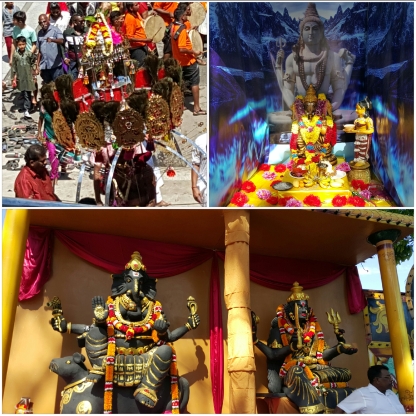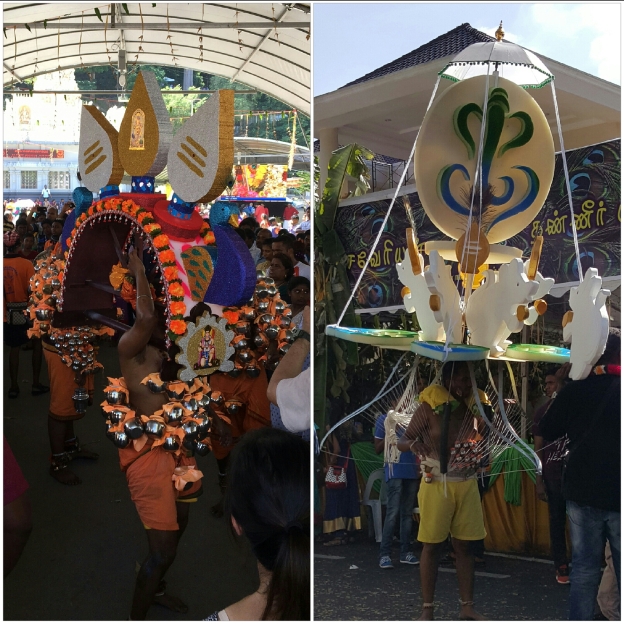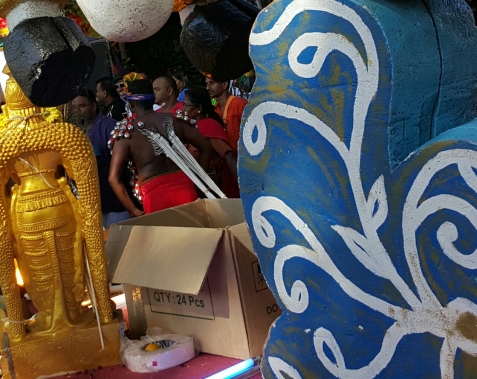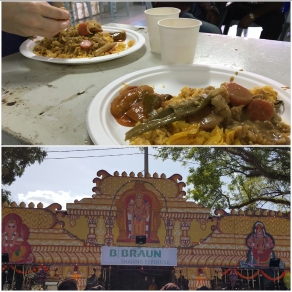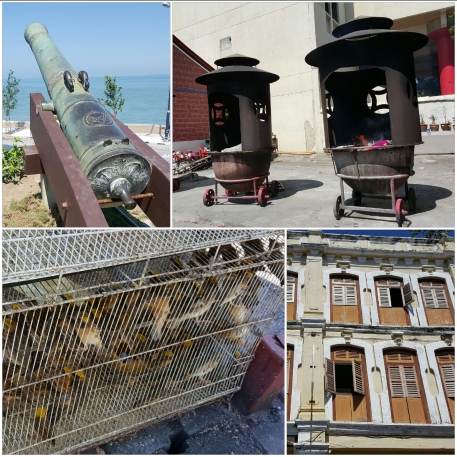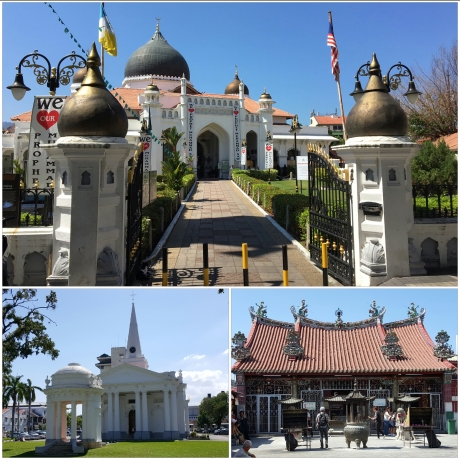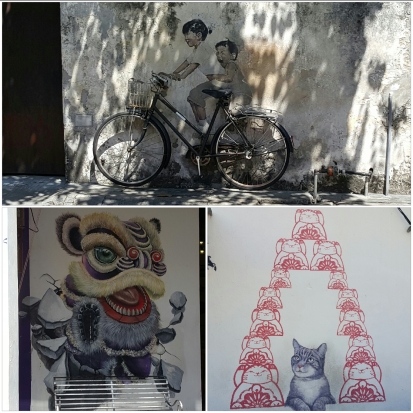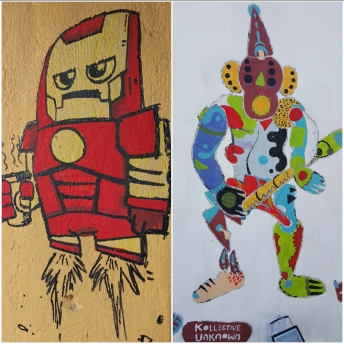We spent our last day in Penang making sure we left with a vivid final impression. The Dhamikarama Burmese Temple and Wat Chaiya Mangalaram Thai Buddhist Temple were on our list, as was another visit to the Kapital Keling Mosque, this time during visiting hours rather than Friday afternoon prayers.
Like other Buddhist temples, the Dhamikarama Temple has many buildings and altars scattered around the grounds, and the far corners of the complex were relatively tourist-free. We wandered to a bell tower in the back, and climbed up four floors in order to get a view of the temple and the new glass-and-metal high rises going up around it. We were the only ones there and admired the carved marble reliefs showing sacred Buddhist sites from around the world. We also tried our hand at tossing coins into alms bowls circling above a pond, but had no luck.
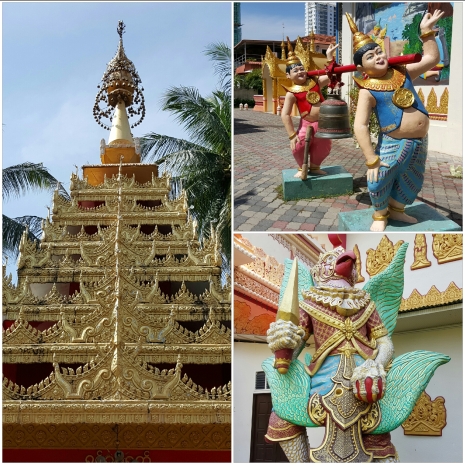
The main hall was the tour group stop, and its towering Buddha statue was the center of attention. It was surrounded by some of the most detailed carving we’ve seen so far – what looked to be a fine lace mesh hanging around the walls was actually hundreds of wooden panels fit together to look like cascades of foliage. It must have taken years to create and assemble. Behind the main Buddha was a row of statues of revered monks, each representing a country with a major Buddhist populations, and all life sized.
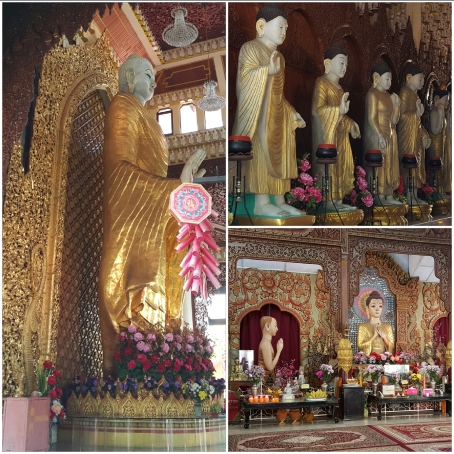
Directly across the street from the Burmese Temple was the vibrantly decorated Wat Chaiya Mangalaram, a Thai temple that looked similar to the ones we grew familiar with in Chiang Mai. This temple is famous for its reclining Buddha statute; at over 100 feet long it is one of the largest in the world.
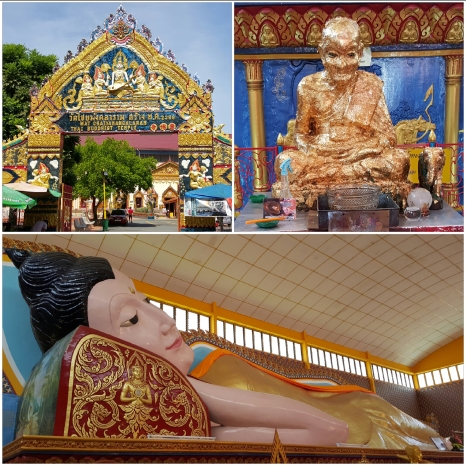
Outside, the nagas protecting the front of the temple are covered in glass mosaic tiles and were my favorite so far because of their bright, jeweled colors. Other guardian statues stood near the entrances and several side pagodas held altars to various deities. Incense, flower garlands, and bright fabrics seemed to be common offerings.
Nearby was a mee goring stand that had the most delicious tofu we’ve ever tasted… and more of the famous Penang white coffee with ice.
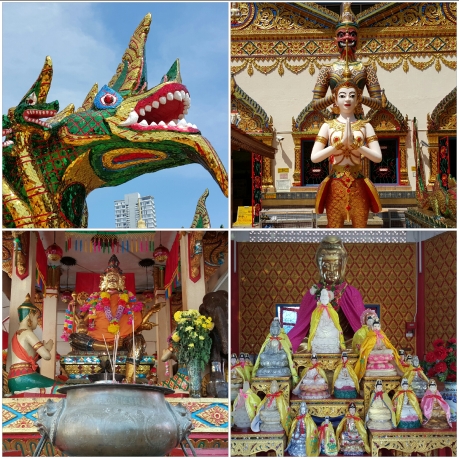
Our last stop for the day was the Kapital Keling Mosque. We arrived as the mosque itself was closing for prayers, so we spent a few minutes in the Islamic Outreach Center located in the minaret. We came back after 2 p.m. to see the interior of the mosque itself. I donned a robe to cover my hair and bare arms. Modesty works both ways though – Kevin also was given a wrap since he was only wearing shorts and men need to have their legs covered to their ankles in order to enter. The mosque itself was peaceful and quiet, just a few people were finishing their prayers and greeting one another.
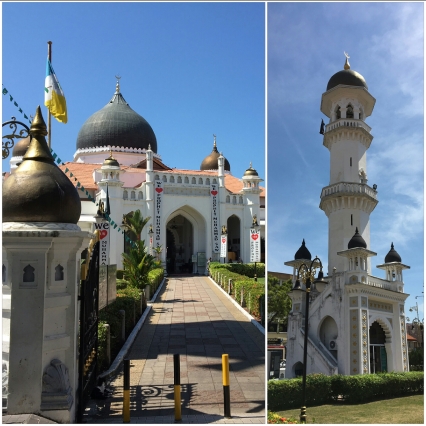
The Islamic influence in Penang is something I didn’t touch on yet, in part because the island is so diverse. However, Malaysia is officially an Islamic country, so there were a few interesting things we noted. For example, shopping centers and large attractions have prayers rooms for Muslims to use if they happen to be there at one of the five times each day the call to prayer is given. From our apartment, we could hear both mosques in our neighborhood broadcasting the call to prayer from their PA systems.
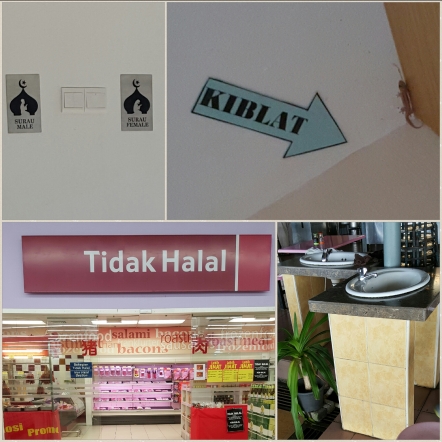
Consuming pork and alcohol is forbidden in Islam, but stores still carry those items to cater to other segments of the population. The beer/wine/hard liquor was in its own corner or room in the store, so it was still easier to get than in some US states. Pork was also in the same section or its own room, usually with “BACON” emblazoned prominently above the door. Washing is a must before eating, so restaurants and areas with hawker stalls have sinks readily available out in the open. I got the sense this was also part of the local secular culture – napkins were few and far between.
Malaysia was such an interesting mix of influences that I can’t wait to go back. We were told multiple times that we should see Kuala Lumpur in all its crazy-traffic, delicious-food, impressive-building glory. As long as air conditioning is part of that, I agree.
We’ve already made our 24-hour trek to Lisbon, Portugal. Our first flights on Malaysia Airlines, which booked us on an earlier flight after we arrived at the Penang Airport early, and on British Airways, which has those fancy new Boeing Dreamliners, were uneventful except for a mad dash of a transfer at Heathrow. (Does anyone else get the feeling that a transfer from one gate to another that requires walking, a tram, more walking, a bus, even more walking down back-hallway looking corridors, going up escalators, meandering through another maze of corridors, passing through security – which we had already done once at Penang and once at Kuala Lumpur – and then a mad dash from security to the gate… literally as the gate is closing… is badly misplaced British humor?)
Lisbon feels like half a world away from Malaysia, and reminds us a lot of Italy so far. We’ll have to get used to driving on the right again, and 60 degrees does seem rather cold. Still, time to explore a new corner of the world and Europe!
